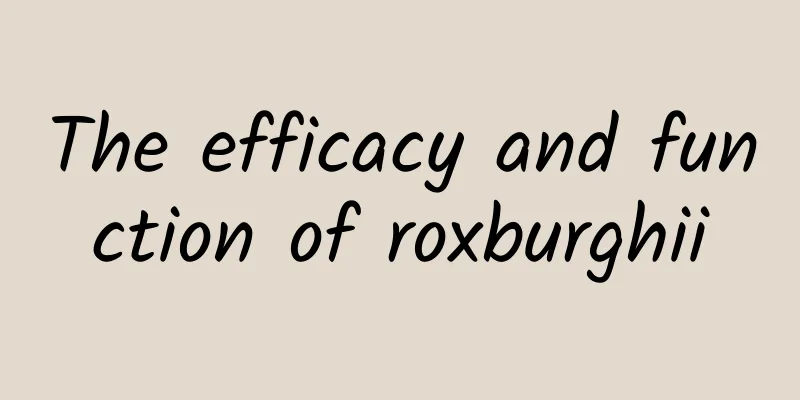The efficacy and function of chrysanthemum

|
Fetal chrysanthemum is a kind of chrysanthemum. The effects and functions contained in it are similar to those of chrysanthemum. They can delay aging and have anti-bacterial effects. If you dry these chrysanthemums and make tea, the effects will be more significant. It is also the chrysanthemum tea that people often drink. It even has a certain inhibitory effect on E. coli, which can prevent you from having diarrhea and nausea in your future life. Anti-pathogen Chrysanthemum has a significant inhibitory effect on certain Gram-positive bacteria and human Mycobacterium tuberculosis. Some foreign studies have also shown that chrysanthemum has a certain killing and inhibitory ability against simple herpes virus, measles virus and polio virus. In addition, another important characteristic of chrysanthemum is its anti-AIDS effect discovered in research. Some chrysanthemums can inhibit the replication activity of some transcriptases and HLV. The isolated acacetin, 7-0-BDO pyranosylgalactose, is a new active ingredient against HIV, and its toxicity to the human body is relatively low, so it can be applied to anti-AIDS related research. Antibacterial effect Relevant data show that chrysanthemum has a complete inhibitory effect on in vitro bacteria such as Escherichia coli, Shigella dysenteriae, Salmonella typhi, Salmonella paratyphi, Proteus, Pseudomonas aeruginosa and Vibrio cholerae, and has a certain inhibitory effect on human Mycobacterium tuberculosis. Anti-aging effects The effect of chrysanthemum is mainly reflected in the fact that certain components of chrysanthemum can significantly enhance the activity of brain cells, prevent cerebrovascular accidents or lesions, delay brain function decline, protect superoxide anion free radicals in cell biomembranes, and achieve anti-aging purposes. In addition, it can also help dilate brain blood vessels, increase blood supply to the brain, and play a good protective role on the brain. Chrysanthemum has the effects of dispersing wind and heat, calming the liver and improving eyesight. It is used to treat wind-heat colds, headaches and dizziness, red and swollen eyes, and blurred vision. "Bencao Beiyao" records: "Chrysanthemum tastes both sweet and bitter, and is mild in nature. It is affected by the four elements and frost and dew, and obtains the essence of gold and water, which benefits the lungs and kidneys"; "Bencao Gangmu Shiyi" records: "It can cure dizziness caused by various winds, improve eyesight and dispel wind, search for liver qi, and benefit the blood and moisturize the face." Modern pharmacological research shows that chrysanthemum has multiple pharmacological effects such as antibacterial, anti-inflammatory, antioxidant, vasodilatory, lipid-lowering, anti-tumor, and lead-removing. Pharmacological properties of chrysanthemum: The main components of chrysanthemum are volatile oils, flavonoids, amino acids and other trace elements. It is often used as an important medicine to treat certain patients' diseases. Its main functions include dispelling wind and heat, calming the liver and improving eyesight. |
<<: Characteristics of Naqu Cordyceps
>>: How to cure Pinellia ternata poisoning
Recommend
Why do I often have bruises on my body?
Expert of this article: Fang Jie, Associate Chief...
Can babies eat Poria cocos?
Poria cocos is a relatively common Chinese medici...
How did chili pepper and mint win the “Nobel Prize in Food”?
The 2021 Nobel Prize in Physiology or Medicine wa...
It’s in the evening! The last lunar eclipse of the year is here! Save the viewing guide!
The last lunar eclipse of this year It will be la...
The efficacy and function of turtle head
Turtle head is a commonly used medicinal material...
A piece of "grass" can actually empty the body of stones
"Cat's Whiskers", a herb that is ve...
Treating Kidney Deficiency with Compendium of Materia Medica
Many men are particularly averse to outsiders say...
How can you keep fresh cut flowers that you buy home looking fresh and new over time?
If you put a few bunches of fresh, colorful flowe...
The 119-year-old special theory of relativity and the 109-year-old general theory of relativity, which one is relative to?
Audit expert: Qian Hang Aerospace science expert ...
[Popular Science of Chinese Military Technology] Why are helicopter engines so different from those of fixed-wing aircraft?
As we all know, the power of aircraft flight come...
When this flower blooms, it reminds you that it’s time for dinner.
Welcome to Northern Plants. Today I’m going to in...
The fierce beast that makes you adorable must be me!
When it comes to the cutest animal, most people’s...
A woman fell into a coma after taking her medicine in pieces! Never take these five types of medicine in pieces, otherwise...
Recently, a piece of news like this appeared onli...
The efficacy and function of Sophora japonica
Sophora japonica is a very common Chinese medicin...









